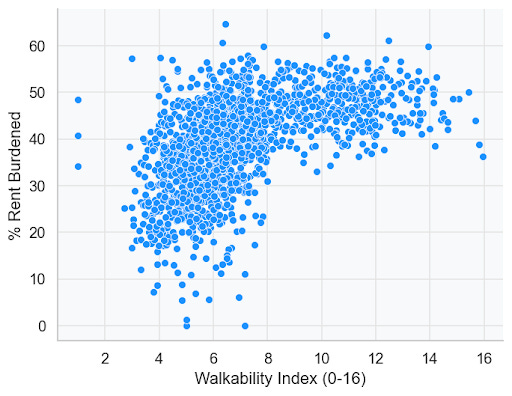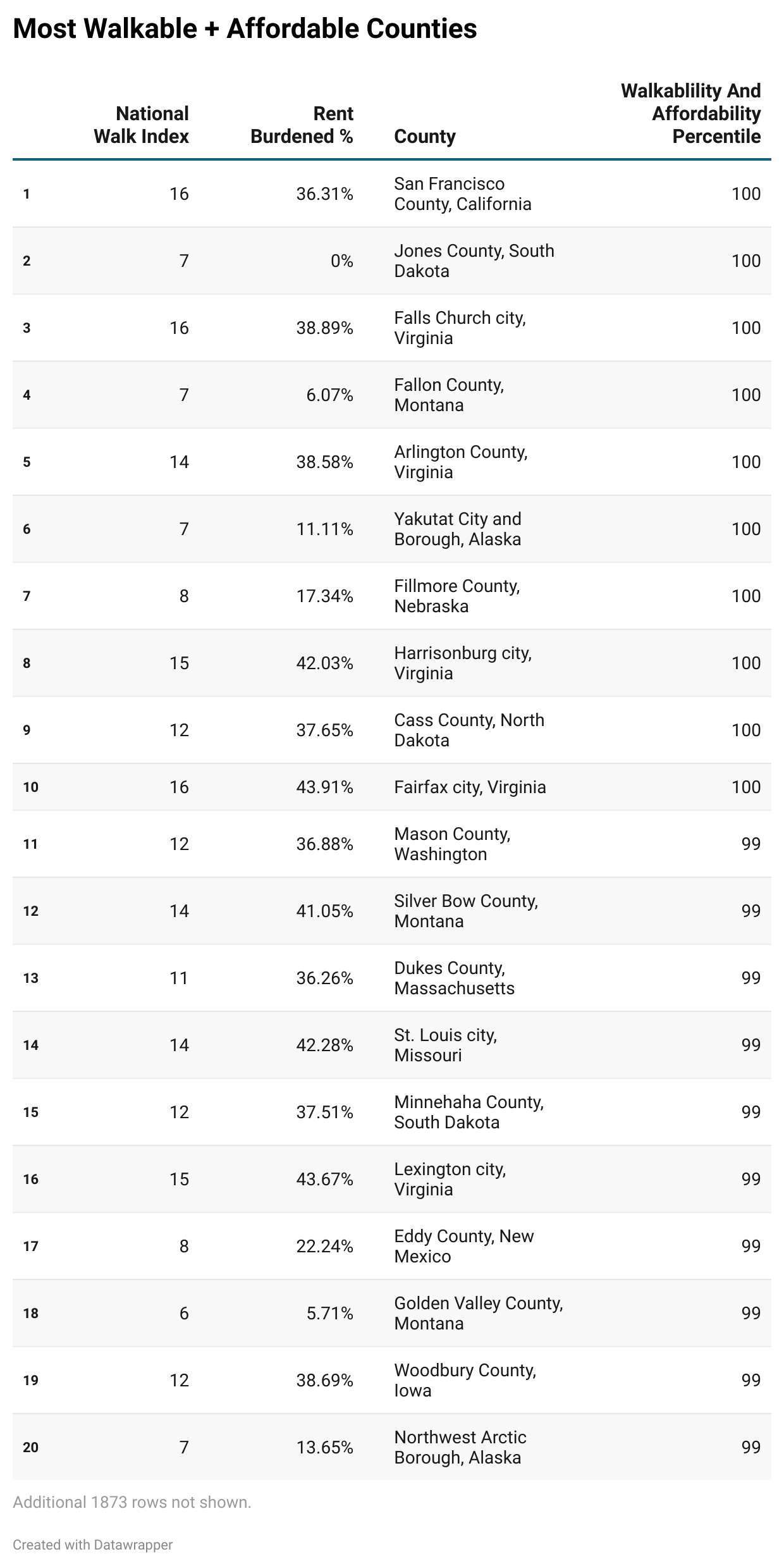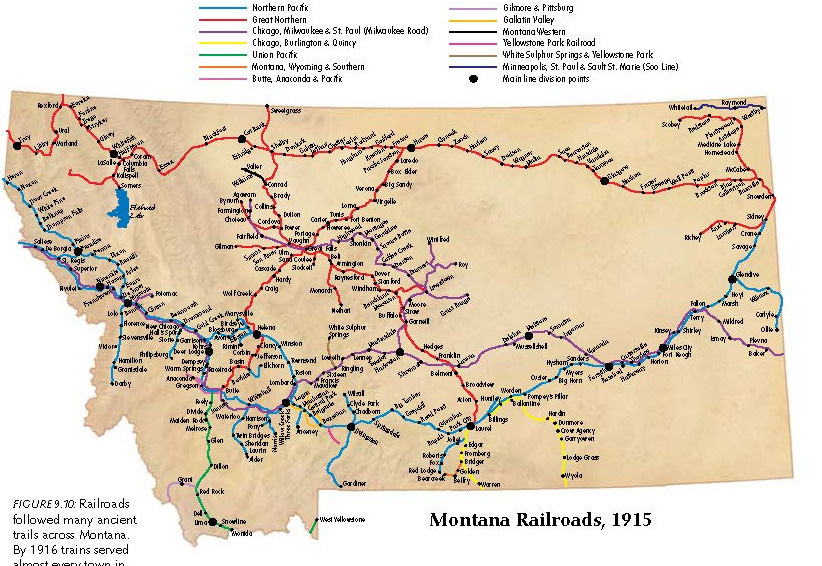I was watching a video by Ray Delanty "CityNerd" on affordable urbanism, Pittsburgh being the affordable urbanism in question, which made me wonder where the best combos of walkable and financially not ruinous happen to be in the United States, when both happen to be in short supply.
Walkable areas in the US tend to be a lot more expensive although the relationship varies and even reverses in a handful of cities. In fact, Redfin claims that on a one point increase on a 0-100 scale is expected be thousands of dollars more in sale price.
So if you weigh affordability and walkability evenly, what are the results? Looking county level across the nation, I took the EPA’s National Walk Index for walkability. To get affordability, I calculated the percentage rent burdened, which is rent >30% household income. Then evenly weighting them I got an index, which is displayed nationwide below:
The nation wide chart shows (aside from missing data due to unstable estimates) that a few of the coastal city’s do well, Montana sticks out, and the rust belt does better than the south and Florida in particular. So what are the winning combos?
Well there is no free lunch, all of the most walkable counties score at or above the average rent burdened % and because of the non-linear banana like relationship we can see that the best scoring counties on the index will be better in one area or another and not the worst in the other typically. So now the punchline, the best county nationwide, overall, for affordable urbanism is…
San Francisco? Home of YIMBYS and NIMBYS?
So SF, the areas outside of D.C. proper with good median (not just mean) incomes, and lots of mountain / western counties. A bit noisy for sure, but one odd cluster was all the Montana counties as seen on the map. So what explains that? Well parts of Eastern Montana are affected by the economic boom in the Bakken formation, the largest oil discovery in U.S. history.[1]
What happened was the population has been experiencing young out migration to bigger cities while pulling in lots of oil money, the result is high affordability for those left. Looking at that whole northern plains region there is a lot of affordability.
There is something else.
Railroads.
The population of Montana largely developed solely because of railroads, with towns spaced out along them, and even today that is reflected.
A great example of one of these railroad towns is Glasgow, MT. Founded by The Great Northern Railroad in 1887. In order to be close to the railroads the towns had to be compact, with high intersection density and short blocks, all things that score well on the walkability index.
Although obviously most people in these towns are driving everywhere the frequency of biking and walking in many of these Montana small towns and cities (especially when they are near a university or hospital) is surprisingly high.
Anyways my take away is that affordability is always relative, if you were a remote worker you would look at places that are cheap, but if you aren’t and are say, a high paid lawyer, places like SF make a lot of sense when you can make top salaries.
The other takeaway is that there really is no affordable urbanism at a macro level in the US, the only place to find deals is at a zip-code or lower level.








